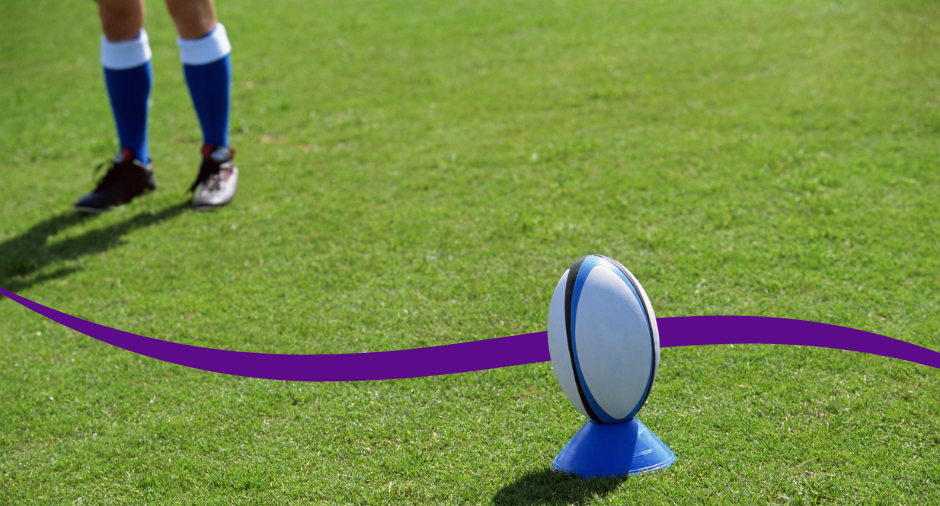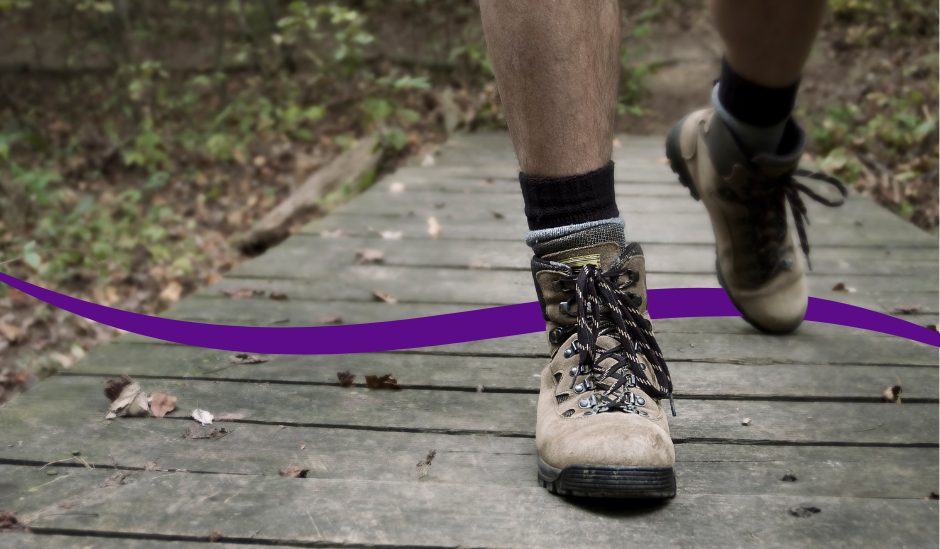

As avid hikers, we guarantee there’s one thing better than getting out in the fresh air to hike through beautiful, nature-filled trails. It’s getting through the hikes feeling great on your feet and staying pain-free (and injury-free).
Unfortunately, as podiatrists, we see people who have had the opposite experience when it comes to hiking. They’ve either been stopped in their tracks by foot pain during their hikes, have had to switch to limping through their hike, or have even injured themselves to the point of facing a painful recovery for weeks after their hike. Yep - it’s far from ideal.
As many of our patients are currently getting ready for long hikes and overseas holidays, our Brisbane podiatrists are left with a resounding question: how can I protect my feet and prioritise my foot health when hiking so I don’t get foot pain?
Today, we’ve shared the exact things we’d be doing if we had a big hike lined up (or a series of smaller hikes) and why it’s important to prioritise your foot and leg health when hiking. If you have any questions about anything we’ve shared here, please reach out.
To start, a big part of properly protecting and looking after your feet during a hike is to look after your feet in the weeks leading up to your hike, especially if you’re going to be more active on your feet in preparation. Hiking demands a lot more from your feet and legs than regular walking or running, and this catches many people out once they’re on the trail. The last thing you want to do is go too hard too fast if you’re doing any training or preparation for your hikes and injuring yourself beforehand.
Your feet are responsible for the comfort (or pain) you feel with every step you take, so being mindful and proactive in caring for your feet properly as you become more active is always a priority. A hiking injury doesn’t just stop when you finish your hike, either. It almost always carries over into your downtime (and even back into your work or home life). Depending on the type of injury and severity, you can be uncomfortable for weeks or longer. And you may be left having to go through an extensive recovery and rehab plan.
Consider what happens when you switch from the regular daily activities that your body is used to daily, to hiking. The uneven trails, rocky paths, constantly going up and down, and often doing one (or many) big ascents and descents through the long-distance hike will place a lot of extra stress and pressure on your feet and legs that they won’t be used to. This is a key red flag for injury with many contributing factors.
For starters, hiking is very repetitive. You’re constantly flexing and extending your ankles, knees, and hips - all of which contribute to muscle fatigue and joint strain when done repeatedly. The uphill climbs ask a lot of your calf muscles, quadriceps, and glutes, demanding strength and endurance. Downhill descents shift the focus to eccentric muscle contractions, particularly in the quadriceps, to control the body's descent and absorb the impact on the joints. Hikers often place much more pressure through their heels, forefoot or arches than they normally do.
Then there are the uneven (and sometimes unpredictable) surfaces you’re walking over. Moving over a mixture of rocks, roots, and gravel means your body will constantly adjust to maintain stability and balance.
The impact of a long hike is even greater again when you’re carrying a heavy backpack, as the added weight intensifies the forces your feet must absorb with each step. This can overload certain areas of the feet and legs, potentially causing pain, inflammation or fatigue. Finally, the friction inside your shoes, particularly during longer hikes, can lead to skin irritation, blisters, and hot spots.
The bottom line? While hiking is incredibly enjoyable (it’s the best), it naturally places a lot of stress on our feet and our bodies, and we’ve got to take care of ourselves while we’re out there, no matter how long or short our hike.
What can you be doing to help protect your feet when hiking? Here are a few easy wins you can start with from today:
Hear us out: having supported and volunteered at many Oxfam trailwalkers and other similar events in our podiatry careers, we guarantee you that the leading cause of injury is from rubbing and blistering in new shoes. This is regardless of whether they’re hiking shoes, trail shoes, running shoes - or whatever else.
And it’s not the shoes, either. Many will have purchased a great supportive brand, had their shoes professionally fitted at the store, and really invested in the shoe side of things. But that doesn’t change the fact that all new shoes must be worn in gradually so your feet get used to them.
If you have brand new shoes, wear them for one hour one day, two hours the next, three hours the following day… progressing to the point where you can be in them all day comfortably. And if you’ve had shoes for years already? Spend a long, full day on your feet on them and then ask yourself: are they comfortable? Do my feet feel good in them? Do they make my ankles feel steady, stable and secure? Do they fit properly with a good toe box? Do my feet and legs feel tired at the end of the day? If you answered no to any of these, consider whether getting a new or extra pair may be in your best interest.
You know how sometimes when you slip a shoe on, it doesn’t feel 100% right, like maybe the tongue or inner is bunched up a tiny bit, or there’s a little bit of sand or a small pebble in the shoe? Always deal with that instantly. Don’t take a single step on your hike if it doesn’t feel right. It’s these little things that, when walked on over 20,000 steps, can lead to massive amounts of discomfort at the end. Trust us, it’s a lot better to stop to adjust your shoes than to hobble for days following your hike.
If you wear orthotics when exercising or on a daily basis, you don’t want to skip this step. Even if your hiking boots come with ‘in-built arch support’ in the liners, they will never ever replace the immense benefits that custom foot orthotics offer you due to their unique, tailored nature. Custom foot orthotics are designed for injury prevention and give you the proper support you need, so don’t skip this step.
If your orthotics aren’t compatible with your hiking shoes, chat with your podiatrist to see what they can do. They may be able to make some adjustments or order you a second pair that has features to better match your hiking shoes.
Blisters are one of the most common hiking woes, and the right sock setup makes all the difference in helping prevent them. Consider wearing a thin, moisture-wicking liner sock under a thicker hiking sock. The inner sock helps reduce friction against your skin, while the outer sock provides cushioning and wicks away sweat.
We love the two-layer approach, which can help prevent blisters, especially on long hikes where you’re walking for hours. Plus, your feet are actually kept cooler, you get an extra layer of padding, and you have double protection for the skin beneath your socks from mozzies, plants and all the other wonderful things that mother nature may throw at you.
Ever get so focused on a task or goal that you forget about some of the basics? This is one of them. Long toenails can quickly become a source of pain when hiking, especially during steep descents. Long toenails are prone to pressing against the front of your shoes, leading to bruising, discomfort, and even toenail loss. Even if you trimmed them a week prior, trim them again the day before your hike so they’re at a safe level - not long (but not painfully short, either).
If you have any nail or skin concerns like ingrown toenails, warts or corns that cause you pain, also make sure these are managed before your hike. If you have any of these or other issues like bulky, thickened nails, we can take care of them in one appointment with our podiatry team.
If you’re doing training hikes and feel a hot spot, mark them, note them down, and tape them on the morning of your hike. Hot spots are tender, often red areas that signal to your body that a blister will shortly develop if nothing changes. The skin is starting to fatigue, most likely due to rubbing or friction your feet aren’t used to.
Use blister prevention tape, moleskin, hikers wool - any product that will effectively help reduce friction so you don’t succumb to those pesky painful blisters.
As we mentioned earlier, your feet will carry you through uneven terrain, steep climbs, and long distances, so they must be strong and stable. Simple movements like toe curls, calf raises, and balance exercises can all go a long way to improving your stability, reducing your risk of a hiking injury, and helping your feet handle the demands of the trail. Strong feet are more resilient and better equipped to handle the challenges and the unexpected.
Swelling during hiking happens because of the increased blood flow and pressure on your feet. To help, you want to take regular breaks (where plausible) where you elevate your feet on a rock or log to reduce fluid buildup. Elevating your feet even slightly above your heart encourages blood flow back to your upper body, reducing swelling. You can also loosen your laces to improve circulation, but keep them snug enough for support.
If you know you’re prone to swelling, wearing compression socks can also help by applying gentle pressure to your feet and legs, preventing fluid from pooling. Also, stay well hydrated, as dehydration can worsen swelling.
Need help preparing for your hike, or have an old injury you’re worried will rear up again and stop you in your tracks? This is exactly what our podiatrists are here for - to make sure you can do the things you love and stay safe doing so. We have two clinics across Brisbane CBD and Newmarket, and you can book an appointment by calling us on (07) 3356 3579 or booking online here.
And while we’re at it, here are a few more podiatry insights:
| Monday | 7:40am - 6:00pm |
| Tuesday | 7:40am - 6:00pm |
| Wednesday | 7:40am - 6:00pm |
| Thursday |
7:40am - 6:00pm |
| Friday | 7:40am - 2:00pm |
| Saturday | CLOSED |
| Sunday | CLOSED |
Ground Floor, 344 Queen Street,
Brisbane City QLD 4000
| Monday | 7:40am - 6:00pm |
| Tuesday | 7:40am - 6:00pm |
| Wednesday | 7:40am - 6:00pm |
| Thursday |
7:40am - 6:30pm |
| Friday | 7:40am - 5:00pm |
| Saturday | 7:40am - 4:30pm |
| Sunday | CLOSED |
Newmarket Village, 114/400 Newmarket Rd, Newmarket QLD 4051